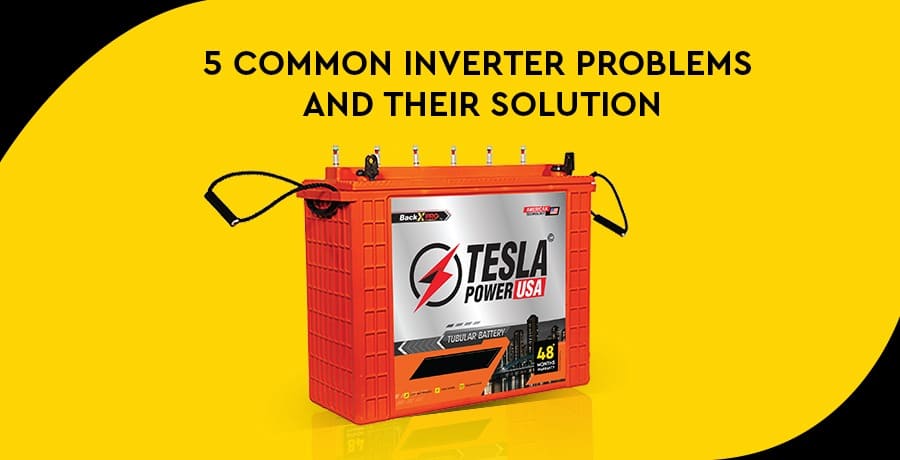Inverters have become an essential part of our daily lives, as they help in case of power outages. But, like any other electrical device or appliance, inverters can occasionally develop problems. In this blog, we will discuss and know the most common inverter problems and their solutions.
Battery Issues
One of the most common issues people generally face with their inverters is battery-related. Many times, the inverter fails to charge the battery or does not provide adequate power backup. Several reasons, such as overcharging, undercharging, or a damaged battery, can cause this.
Solution:
Regular battery maintenance is crucial to ensure that it remains in good condition. Charging the battery at the correct voltage and ensuring it is not over-discharged can help. If the inverter battery is found to be defective, replacing the battery with a new one is the only solution.
Overheating
Overheating is another common issue with inverters. Inverters generate heat while operating, and it can damage the inverter's internal components.
Solution:
Ensure that the inverter has enough space for air circulation. Place the inverter in a well-ventilated area, and do not block its air vents. You can also use cooling fans or install an exhaust fan to provide proper ventilation.
Voltage Fluctuations/Instability
Voltage fluctuations or instability are other common problems with inverters. When the voltage is unstable, it can trip the inverter, leading to power loss.
Solution:
Best solution to this problem is to use a voltage stabilizer. Installing a voltage stabilizer can regulate the voltage and protect the invervter from damage due to voltage fluctuations. Also, ensure the input voltage is within the inverter's range before connecting it.
Inverter is not turning on
Sometimes, the inverter fails to turn on, even when the battery is charged. This can be due to a loose connection, tripped circuit breaker, or a damaged fuse.
Solution:
Check the connections and ensure that the wiring is correct. Reset any tripped breakers or replace any damaged fuses. If this fails to solve the problem, seek the help of a qualified technician to inspect and diagnose the issue.
Display Errors
Some inverters can display errors that hinder the user from using the device. These can range from wrong readings or messages to no lessons at all.
Solution:
First, check the inverter's manual to understand and diagnose the error message displayed. If the manual doesn't help, you can reset the inverter by turning it off and then on. If that fails, inspect the device's connections for any loose wires or connections. If these do not help, contact the manufacturer for help or consult a qualified technician.
In conclusion, with power outages becoming more common, inverters have become essential to our daily lives. Yet, as with any electrical device, they tend to develop problems. Regular maintenance, proper installation, and proper use of the inverter can help avoid most of these issues.






